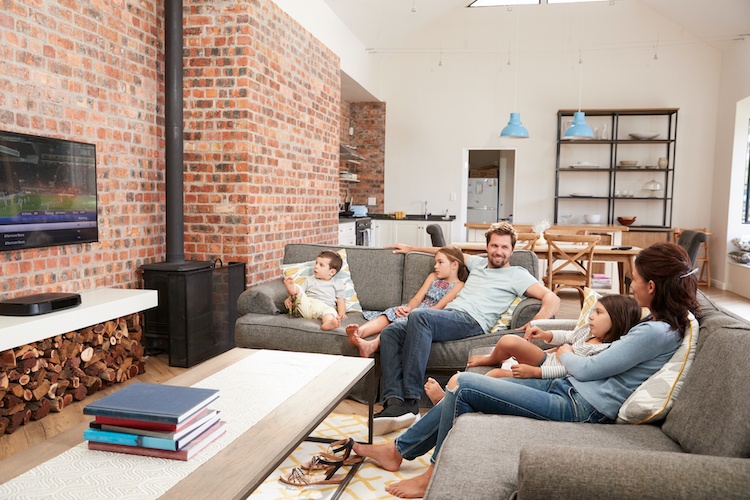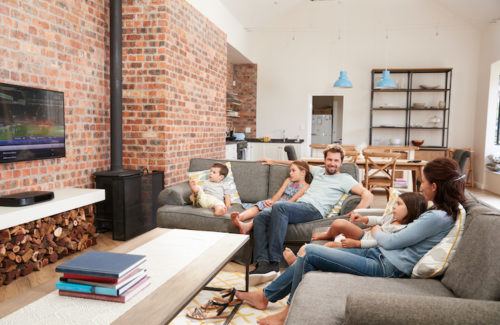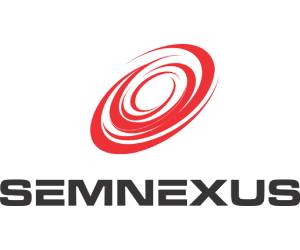The coronavirus outbreak is an extraordinary challenge for businesses, including the entire media market at large, and especially the advertising industry. The current critical situation requires new approaches to running companies and tests a brands’ ability to overcome hurdles. In these gloomy days, is there a silver lining that can give brands hope? The CTV and OTT environment may offer some respite.
Coronavirus impact on the US ad spend
The pandemic impact on the world economy has been devastating. Kristalina Georgieva, the managing director of The International Monetary Fund, claimed in an IMF podcast on April 9 2020, that the global community “anticipates the worst economic fallout since the Great Depression.” Naturally, such worrisome tendencies were reflected in the media buying industry. According to an IAB report, “74% of buy-side decision-makers think Coronavirus will have a greater impact on US ad spend than the 2008-09 financial crisis.” Consequently, the economic recession countries are entering now demands businesses revise budgets for launched or planned ads.
Although the vast number of the US population stays at home influencing the increase of the volume of media consumption, the prevailing number of companies either postpone or tweak commercial campaigns, adapting them in response to the COVID-19 pandemic. As it is stated by CNBC, 81% of large companies, the members of the World Federation of Advertisers (WFA), including Unilever, Coca-Cola, Visa, Airbnb, L’Oreal, and others are deferring their ad messages and budgets.
What is happening right now in advertising in the second quarter of 2020?
IAB reported that 24% of respondents have paused all advertising spend for the rest of the second quarter of 2020 while 46% of respondents are adjusting advertising spend for the same period. Digital ad spend decreased by 33%, while traditional media expenses are down 39%. Based on data retrieved from Fiksu, a globally recognized cross-channel advertising platform focused on Connected TV, ad spend change in April 2020 shows a decrease in travel (90%) and sports (62%) but growth in science (26%) and news (14%). The respondents of eMarketer research “expected the pandemic’s worst effects on ad budgets to be concentrated in Q2, with the Q3 impact still somewhat bigger than in Q1.” They believe the coronavirus impact on ad spending to be more modest in the fourth quarter, and the situation will have been clarified by the end of 2020.
Ultimately, Statista gives an optimistic forecast for the digital advertising industry. Its revenue is believed to grow by 4% throughout the entire year while the profits for linear TV are expected to decline by 12%.
Brand-Building During Lockdown
To target audiences, ads should mirror the standards of life in lockdown. Thus, brands are required to build their messages without violating the norms of quarantine reality. For instance, some ads showing people licking their fingers or others with scenes of hugging actors contradict the current requirements of personal behavior and social interaction. The messages of these commercials can’t convey the desired ideas because they may be misinterpreted. People have to follow medical advice to diminish social contact and avoid touching their faces. Disregard for the circumstances won’t result in desirable revenue but will instead emerge as a drain on a company’s budget, as well as will bringing severe damage to the brands’ image.
But on the flip side, according to IAB, 63% of advertisers are adjusting their messaging and increasing mission-based marketing by 42% and cause-related marketing by 41%. Thereby, CTV and OTT environments enable brands to directly interact with their audiences, adjusting to reality. These channels assist companies in selling their goods and services, requiring them to produce commercials with appropriate messages and covering up-to-date, meaningful aspects.
So, how do brands incorporate the coronavirus reality in their new ads?
Shift the focus, but preserve the value
Athletes and celebrities are not in focus anymore. Budweiser, the popular alcohol brand, released a commercial with spots from empty stadiums and streets to highlight the importance of staying at home and the role of professionals in the fight against the pandemic. Although the company mainly invests in sports events, it has shifted to heroes helping in the struggle against coronavirus. The brand’s commercial is a vivid example of message adjustment as it significantly changes the focus and expands the target audience. Companies depict ordinary people, like healthcare personnel, to praise everyone’s contribution in the struggle with the coronavirus. They show their awareness of the situation and give support to customers’ understanding of all possible difficulties and inconveniences they may currently undertake.
Provide solutions
Instead of claiming the importance of social distancing and staying at home, brands advertise ideas of pastimes. Thus, they choose not only to encourage their clients but solve their problem of boredom under quarantine by suggesting alternatives, like DIY options. Restaurants sell food boxes with their chefs’ lessons on how to cook a restaurant dish. The audience acquires a twofold benefit from the brand: protection and solution.
🚀 Grow Your App! Free ASO Audit by Award-Winning Agency
Discover how Yodel Mobile, the App Marketing Agency of the Year, can transform your app. Gain insights with our free ASO audit, proven in elevating apps like B&Q, Afterpay and Gymshark. 🌟
Get StartedShow concern about your customers
OTT and CTV are, for many people, the only links with the outside world as they remain isolated in their households. When brands show near-empty streets, not only do they let their audience visit their favorite public places but they also reinforce their commitment to the significance of lockdown. Companies remind clients of their contribution to the protection of society from the coronavirus spread. Additionally, brands emphasize their readiness to take care of and deliver products directly to their customers and thus reducing risks of being infected. For instance, in its ad Domino’s Pizza highlights that the brand works to ensure comfortable service during the quarantine. Intrinsically, people see empty public places and realize the importance of staying home by being urged to order online and getting contactless delivery.
Focus on emotions not the quality of the ad
It’s essential to admit the shift of new ads’ focus from impressive movie-like videos to compelling emotional messages. As companies have reduced cost production, ads display photos combined together with the text on a plain background. As for McDonald’s, its ad campaign during the coronavirus lockdown alters captivating plots to a white and red text on a yellow background. The company emphasizes safety of the community as the main priority, calling for customers to social distance and promotes Drive-Thru. Obviously, budgeting for ad production has been significantly reduced. According to The Los Angeles Times, commercial production that is the second-largest category for on-location filming is down 12% from the record level in 2018.
Channels adjustment
Despite the alteration of the key message as a novel challenge for brands, the search for new platforms for ad displaying is another hurdle. Some channels may be less effective during the coronavirus outbreak. According to the IAB report, about 35% of advertisers are adjusting their in-market tactics and increasing audience targeting by 38% and OTT/CTV device targeting by 35%.
Moreover, channels struggle for popularity as some of them experience a decrease in demand in comparison to others. Hospitality or travel brands have either cut down their part or completely halted their spend. At the same time, online ad inventory has increased by 16%.
Recommendation on how to stay relevant during lockdown
So, what works for brand-building during the lockdown?
Message fit
The focal idea the brand sends to its consumers should be based on two essential factors: correspondence to the current situation and expression of empathy. Primarily, the advertising campaign needs to adapt to the pandemic and its reality. So, the appeal to the audience and visual creativity should highlight contemporary social values but preserve brand value and uniqueness. It might seem impossible to conform the brand’s message to the new conditions, but there’s still a chance to do it as it’s been stated in the examples above.
Needless to say, this is a difficult time for thousands of people as they look to brands for an escape to the problems that surround them. Thus, companies have to comfort, suggest ways out and help customers cope with fear, anxiety, or stress. The transmission of genuine empathy in the message is the second crucial factor for targeting both current and potential audience. In the meantime, there should be a balance between words and images. The context has changed so textual or visual messages that seemed inoffensive only a few months ago can be perceived as hurtful to a person nowadays.
Channel fit
The next step on how to stay relevant during the lockdown is to find the channel where the majority of a brand’s audience can be reached. Delivering information through the right communication channels facilitates the reasonable use of a company’s resources. Connected TV appears a perfect choice due to several reasons:
- The majority of people are confined to their homes where they need a particular type of entertainment or just simply a distraction, and CTV meets this requirement.
- The more time users spend watching CTV and OTT, the more ads they may see.
- Since ads are displayed to the right audiences, targeting becomes more precise.
- Advertising on CTV provides more tools to analyze effectiveness.
Think long-term & plan your next marketing moves
When considering the current circumstances, it’s vital for companies to be flexible and easily modify the marketing processes. The long-term strategy defines the course of the ad campaigns and helps assess expenses and revenues to figure out the effectiveness of their performance. Being capable to react promptly and conform to the rules of the coronavirus quarantine or other crises ensures prosperity to the brand.












